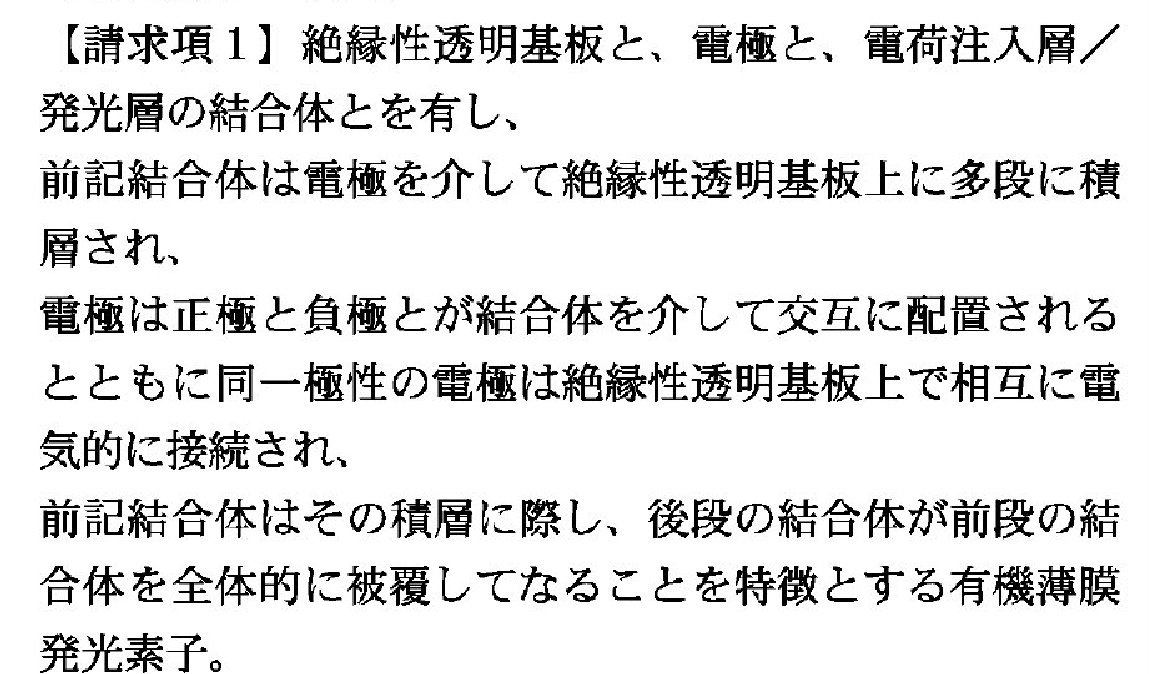February 08, 2004
The Bird Clapper: A New Tool in Semiconductor Fabrication
My cousin David recently had occasion to read a Japanese patent on the fabrication of light-emitting diodes. Japanese patents are, naturally, written in Japanese, but for the benefit of foreigners the Japan Patent Office provides machine translation. David asked me about this one because it mentions a "bird clapper", an item not usually used in semiconductor fabrication.
Here is the machine translation of the first claim in the patent. Before you read it, it is only fair that you should read the disclaimer that the Japan Patent Office attached to it:
This document has been translated by computer. So the translation may not reflect the original precisely.I'm afraid that this is a bit of an understatement. I've highlighted bird clapper for you lest you get lost en route:
Have the following and the laminating of the aforementioned joint object is carried out to multi-stage on an insulating transparent substrate through an electrode. It is the organic thin film light emitting device to which a latter joint object, on the whole, covers the joint object of the preceding paragraph on the occasion of the laminating, and the aforementioned joint object is characterized by the bird clapper by connecting the same polar electrode mutually electrically on an insulating transparent substrate while, as for an electrode, a positive electrode and a negative electrode are arranged by turns through a joint object. Insulating transparent substrate Electrode The joint object of a charge pouring layer / luminous layer
Even for those who can't read Japanese,
I'm not sure that this is much more enlightening than the original Japanese text:

Here is my own translation, which I've tried to keep fairly close to the structure of the Japanese:
An organic thin film light emitting device such that, having in hand a transparent insulating substrate, electrodes, and the bonding substance for the electric charge injection/light-emitting layer, the aforementioned bonding substance is laminated on top of the transparent insulating substrate in multiple stages by means of the electrodes, and as for the electrodes, the electrodes of the same polarity are connected to each other electrically by means of the transparent insulating substrate at the same time as the positive and negative electrodes are positioned alternately by means of the bonding substance, and as for the aforementioned bonding substance, at the time of lamination, has the distinctive property that the bonding substance of the latter stage comes entirely to cover the bonding substance of the former stage.
[What I have translated as "bonding substance" is apparently a technical term in the fabrication of organic light-emitting diodes, an area in which I am not expert. It could be "bonding body" or something else. If any reader knows the correct translation for this term, I would appreciate it.]
So, where did the "bird clapper" come in? Well, toward the end of the third clause
within this tripartite relative clause we find the following sequence of words:
| 被覆 | して | なる | こと |
| hifuku | site | naru | koto |
| covering | doing | becomes | fact |
The translation program misparsed this and grouped the verb naru and the first syllable of the noun koto together to form the word naruko なるこ, usually written 鳴子 A naruko is a kind of noisemaker or clapper, made of a small board to which lengths of bamboo are affixed. It is also called a "bird rattle" because it was originally used to scare birds away from farmers' fields. It is now used as a percussion instrument in some types of dancing. There aren't any bird clappers in the Japanese text - the machine translation program invented them.
Grouping together parts of different words into a single word isn't as stupid as it might seem since Japanese does not separate words in writing, but both this and the garbled syntax of the rest of the claim indicate that this MT system isn't doing too well. A guess at one problem is that many MT programs assume that the text consists of sentences, but this one doesn't: each claim is a Noun Phrase.
Posted by Bill Poser at February 8, 2004 11:06 PM